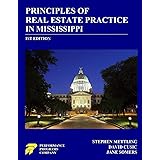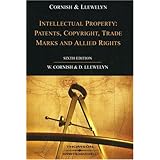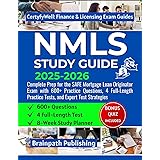Have you ever dreamed of owning real estate but felt held back by the common belief that you need a massive down payment? Many aspiring investors find themselves in this exact position, believing the barrier to entry is simply too high. However, as the video above eloquently demonstrates, the path to buying real estate with no money down, or at least very little, is more accessible than you might think.
Deconstructing “No Money Down” for Real Estate Acquisition
The concept of “no money down” often creates a misconception. As Grant Cardone explains, it rarely means literally zero dollars out of your pocket. Instead, it typically signifies either a minimal personal investment or, more importantly, leveraging “other people’s money” (OPM) to fund your acquisition.
This approach shifts the focus from your personal bank account to your ability to find lucrative deals and structure creative financing. It challenges the conventional wisdom that cash is king, positing instead that a great deal is the ultimate currency.
Real-World Examples of Creative Financing
Consider the personal anecdotes shared, which perfectly illustrate this principle. Grant’s very first real estate deal involved a $3,500 down payment on a $78,000 asset. While not zero, this minimal investment generated immediate cash flow, proving that even a small sum can unlock significant opportunities.
His second property was acquired with genuinely no money out of pocket, a $92,500 purchase that later yielded a $30,000 profit. These examples highlight the potential for significant returns even when personal capital is scarce.
The Power of Market Corrections in Property Acquisition
One critical insight revealed in the video is the immense opportunity presented during market corrections. Periods of economic uncertainty, like the late 1990s when 600 banks failed, or the 2008 financial crisis, create environments ripe for advantageous real estate purchases.
These are times when properties can be acquired for significantly less than their previous market value or even their construction cost. As noted, a property purchased for $1.9 million during a correction, when its prior owner had invested $5.1 million to build it, is now valued at a staggering $20 million. This demonstrates the incredible long-term wealth potential available to those who act decisively during downturns.
Identifying and Securing Lucrative Real Estate Deals
The core message is clear: once you find a compelling deal, the money will follow. The most important step in real estate acquisition is the identification of an undervalued or high-potential property. After securing the deal, various financing avenues become available to cover the down payment or equity.
Many aspiring investors get stuck believing they need cash on hand before they even start looking. However, the successful strategy involves reversing this thinking. Focus on uncovering a deal that stands on its own merits, and the financing solutions will materialize.
Leveraging “Other People’s Money” (OPM) for Down Payments
The concept of OPM is central to buying real estate with no money of your own. This strategy involves strategically borrowing capital from various sources to secure a property. There are multiple ways to gather the necessary funds for a down payment, even for substantial investments.
For a $1.9 million multifamily property, a $350,000 down payment was assembled using a diverse range of sources. These included withdrawing from a retirement account, borrowing from family members like a mother or brother, utilizing credit cards, and even taking a short-term loan from a personal business. This mosaic of funding illustrates the creative approaches successful investors take.
Multifamily Real Estate: A Strategic Financing Advantage
Multifamily real estate offers a unique advantage when it comes to securing financing. Lenders such as Fannie Mae, Freddie Mac, or commercial and regional banks often base their loan approvals not on the borrower’s personal credit score, but on the property’s value and its income-generating potential.
This allows investors to secure substantial loans, like the $1.65 million loan mentioned, which is essentially “other people’s money” provided by the bank. This debt is considered “good debt” because the property itself generates the income to service it, making it a powerful tool for scaling your real estate portfolio.
The Power of Cash Flow to Repay Debt
A crucial element of this real estate financing strategy is the property’s ability to generate cash flow. Banks require properties to demonstrate positive cash flow to approve loans. This cash flow then becomes the engine for repaying the various sources of OPM.
For instance, a 12% cash flow on a $350,000 down payment, generating $42,000 per year, provides ample funds to pay back borrowed money from retirement accounts, family, or business loans. This systematic repayment, often over a few years, demonstrates the self-sustaining nature of well-chosen real estate investments.
In one example, the initial $350,000 borrowed from various sources was fully repaid within 37 months using the property’s cash flow. This freed up the investor from personal debt obligations while the property continued to appreciate and generate income.
Tax Advantages and Scaling Your Portfolio
Beyond the immediate profits, real estate investing offers significant tax advantages. By utilizing strategies like a 1031 exchange, investors can defer capital gains taxes when selling one investment property and reinvesting the proceeds into another.
This deferral allows capital to grow exponentially over time, facilitating the acquisition of larger and more numerous properties. The ability to continually roll over profits without incurring immediate tax liabilities is a cornerstone of long-term wealth building in real estate. The strategies discussed for buying real estate with no money are not just one-off tricks; they are repeatable and scalable, applicable to billions of dollars in property acquisitions for those who master the art of creative financing and deal identification.









